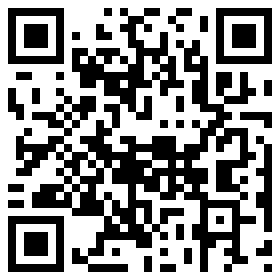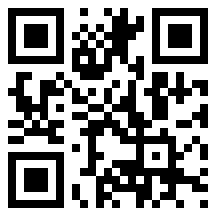This will not be my first FLNW event. I participated in FLNW in January 2008, documented here:
- http://www.vancestevens.com/papers/index.html#080112
- http://advanceducation.blogspot.com/2008/01/future-of-learning-in-networked-world.html
If given the opportunity, this is what I hope to be speaking on ...
Teachers these days, struggling to cope with technology overload, can sometimes misconstrue the nature of the beast. Dogme language teachers espouse teaching "unplugged" but are grappling with to what extent technology facilitates or detracts from that process (see links below). Musicians who play unplugged for example, still use technology to amplify their clean sound, and perhaps podcast their recordings. Technology, therefore, helps musicians to be heard when digital literacies are understood by those around them. Used correctly, technology can greatly facilitate the process of language learning; incorrectly (as with bands who rely on technology) it would be a distraction, perhaps an obstacle. Prensky has gone so far as to say teachers shouldn't use IWB's because they would use them inappropriately, but their students should use them (http://advanceducation.blogspot.com/2009/04/prensky-on-interactive-whiteboards.html).
Why, what assumptions underly so provocative a statement?
I'd like to talk this summer about the dozen paradigm shifts that users of technology need to understand before they can apply them in ways that can be transformative to students. When teachers think of technology challenges they often have in mind learning to use the latest educational and administrative gadgets and software systems,such as those listed by Allen in his article in TESOL Arabia Perspectives, to which I responded here: http://multiliteracies.ning.com/profiles/blogs/how-can-teachers-deal-with (and this article contains as well my latest characterization of the dozen paradigm shifts). This mindset addresses certain functional literacies skills that often fall short of accommodating how technology is transforming the way we view and interact with one another in our world, with immediate ramifications to our educational systems and our students themselves.
Using technology is only partly about interfaces and settings. It's more correctly about having a theory of how people learn, and how the many different technology tools can be made to work together to foster development in a subject matter in ways commensurate with that appropriate model of learning.
Web 2.0 is the driving force for technology to be applied in constructivist and connectivist models of learning. Web 2.0 puts learning where it belongs, in the hands of learners. I will explain how a number of Web 2.0 tools can be used to enhance language learning by allowing learners to produce artifacts and leave them online where other learners can find them and interact with them in a process that develops communicative and critical skills while intrinsically motivating students to produce quality work in response to a palpable awareness of audience (e.g. http://writingmatrix.wikispaces.com, Stevens 2009a, and Stevens et al. 2008).
I hope to talk this summer about how student peers can find one another in a seemingly chaotic online environment. The quick answers to that regard the paradigm shift from taxonomies to folksonomies, such as tagging and RSS, which I will also address. I could perhaps elaborate on the concepts in workshops such as the one delivered here: http://justcurious.posterous.com/powerful-ideas-and-tools-for-getting-the-most-0; however, a short presentation can only give glimpses of the paradigm shifts necessary to move away from the old ways of information dissemination through more traditional gatekeepers. In order empower learners, teachers must truly grasp the fundamentals and principles of applying technology to transformative learning. To accomplish this, practice with peers is necessary, where teachers themselves become lifelong learners and mentors for one another while sharing discoveries and experiences with students, as I point out in Stevens, 2009b.
I have had long experience in many online and face-to-face settings with helping teachers form communities of peers, and suggesting ways that they can develop their own PLN's, or personal learning networks to ensure their continuous lifelong learning (Stevens, forthcoming). Teachers who agree that learner autonomy is something that should be encouraged and developed in students should see the need to cultivate autonomy in themselves. So I will address the issue of teacher autonomy, where the teachers are in their roles by virtue of being, as David Warlick suggests, "master learners," (as I did in my presentation November 6, 2009 entitled Modeling social media in groups, communities, and networks, relevant links blogged here: http://advanceducation.blogspot.com/2009/11/modeling-social-media-in-groups.html; and in written up more formally in Stevens, 2009c).
Change is the most important outcome of this approach to professional development. Too often teachers are put in situations which are labeled professional development but which in reality are (a) driven top-down, (b) don't assess or address teacher needs, and (c) do not lead to development. Teachers who drive their own professional development through participation in learning communities and PLNs are constantly expressing and assessing each other's needs, and promoting professional development on an as-needed basis. Once one is familiar with and comfortable in this style of learning, it is only a short leap to applying it to students.
Etienne Wenger once asked Cristina Costa how she knew she was participating in a community of practice, and she replied, "When my practice changed." (Wenger, 2007) This is the kind of change I hope to be an agent of if I am invited to present this line of reasoning at any professional gatherings this summer.
References
Stevens, Vance. (Forthcoming). Webheads and Distributed Communities of Practice. To be published some time after October 2009 by the TESOL EFL IS Newsletter, as part of a summary of the EFL Academic Session from Denver TESOL 2009. Draft here: http://tinyurl.com/vance2009denver
Stevens, Vance. (2009a July 15). Engaging Collaborative Writing through Social Networking. In Koyama, Toshiko; Noguchi, Judy; Yoshinari,Yuichiro; and Iwasaki, Akio (Eds.). Proceedings of the WorldCALL 2008 Conference. The Japan Association for Language Education and Technology (LET). ISBN: 978-4-9904807-0-7, http://www.j-let.org/~wcf/proceedings/proceedings.pdf pp.68-71.
Stevens, Vance. (2009b). Life-long learner autonomy meets Electronic Village Online. TESOL Arabia Learner Independence Special Interest Group, Conference Newsletter 2009, p.9. http://tailearn.googlepages.com/LISIGNL09.pdf
Stevens, Vance. (2009c). Modeling Social Media in Groups, Communities, and Networks. TESL-EJ, Volume 13, Number 3: http://www.tesl-ej.org/wordpress/past-issues/volume13/ej51/ej51int/
Stevens, Vance, Nelba Quintana, Rita Zeinstejer, Saša Sirk, Doris Molero & Carla Arena. (2008). Writingmatrix: Connecting Students with Blogs, Tags, and Social Networking. In Stevens, Vance & Elizabeth Hanson-Smith, Co-editors. (2008). Special Feature: Proceedings of the Webheads in Action Online Convergence, 2007. TESL-EJ, Volume 11, Number 4: http://tesl-ej.org/ej44/a7.html
Wenger, E. and Nyrop, S. (2007). Communities of practice in an interconnected World: New geographies of knowledge and iIdentity. Keynote presentation at Webheads in Action Online Convergence (WiAOC 2007). Retrieved October 9, 2009 from: http://webheadsinaction.org/wiaoc2007/EtienneWenger; audio recording at: http://streamarchives.net/node/56 and http://streamarchives.net/node/55.
Links for Dogme:
- Scott Thornbury's "Teaching Unplugged" page: http://www.thornburyscott.com/tu/portal.htm
- SEETA course with "Myths about the 'anti-tech' crowd" (must register first): http://www.seeta.eu/course/view.php?id=28


 Tag in your DEL.ICIO.US account
Tag in your DEL.ICIO.US account










